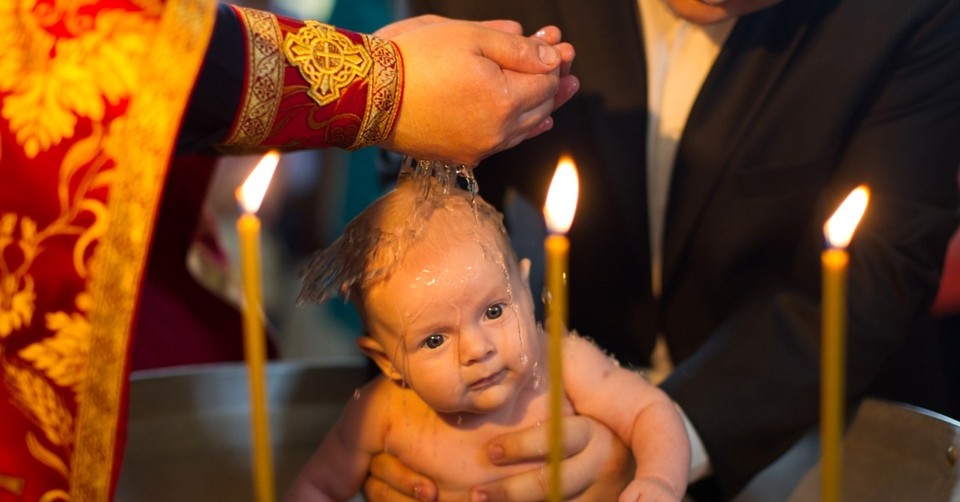What Should Christians Know about the Controversial History of Paedobaptism?

Baptism can be a divisive issue for many churches, and understanding what different groups believe can help believers understand what they believe about an issue. Paedobaptism refers to baptizing children or infants and has been the dominant form of baptism throughout most of church history.
Proponents of infant baptism point to Jesus saying to let the little children come to him and that by doing that, he opened the door for infants and children to receive him through baptism.
So, how do Christians determine whether they support paedobaptism?
When Did Paedobaptism Begin?
Baptism began as a practice in the second temple period of Judaism, between the old and new Testaments. It was viewed as a way of dedicating oneself in service to God and removing ritual uncleanness. Non-Jews were required to be immersed in the mikvah, a full-body tank. Baptism for the Jews was a repeatable practice. Meanwhile, for Christians, it is a once-for-all thing.
The first Christian writing on baptism outside the Bible comes from the Didache, a text from the late second century. It discusses baptizing a convert only after they have been instructed in the faith, which implies they are adults when being baptized.
The first alleged reference to infant baptism comes from Irenaeus, where he says, “He came to save all through means of Himself—all, I say, who through Him are born again to God — infants, and children, and boys, and youths, and old men.” (Against Heresies 2:22)
This points to the fact that Jesus was the one who truly and perfectly became all things to all people rather than advocating in favor of paedobaptism. Irenaeus argues that Jesus had to enter into every part of human life to sanctify it, as opposed to the gnostics, who placed a special importance upon the number thirty and alleged that Jesus was baptized and died within the same year, at age thirty.
Paedobaptism was a common practice by the end of the fourth century when the church had more acceptance within the Roman empire. Infant baptism becomes the norm in environments where Christianity is more encouraged and openly practiced.
Paedobaptism takes many different forms, so let’s dive into how different denominations view paedobaptism.
What Is the Catholic View of Paedobaptism?
The Catholic view of paedobaptism asserts that children who are baptized are cleansed from original sin and all sins committed to that point. The baptized are given the character and ability to continue growing in their faith. Baptism is the entry point into the Catholic church. Baptism allows the believer to begin to grow in grace. Godparents also play a significant role in aiding the baptized to grow in their Christian life. They are the ones specifically charged with aiding the child s spiritual development.
Augustine makes the point that Catholics view baptism as the unity of all believers who desire to be baptized, but not everyone who desires to be baptized is actually saved. Baptism regenerates as long as a priest performs it under the right circumstances, but people can choose later to reject that baptism. People have the power to undo the sacrament because of their sins, which is why the eucharist is necessary every week to receive the grace and power to continue to live a life pleasing to God.
What Is the Lutheran View of Paedobaptism?
Luther wrote extensively on baptism in his catechism. He said:
“That the Baptism of infants is pleasing to Christ is sufficiently proved from His own work, namely, that God sanctifies many of them who have been thus baptized, and has given them the Holy Ghost; and that there are yet many even to-day in whom we perceive that they have the Holy Ghost both because of their doctrine and life; as it is also given to us by the grace of God that we can explain the Scriptures and come to the knowledge of Christ, which is impossible without the Holy Ghost. But if God did not accept the baptism of infants, He would not give the Holy Ghost nor any of His gifts to any of them; in short, during this long time unto this day no man upon earth could have been a Christian.” (The Large Catechism 12A)
These two quotes summarize Martin Luther’s personal views on Baptism, which was quite controversial in his day. One of the strongest proponents of credobaptism was Ulrich Zwingli, a reformer who developed the idea that believers should be baptized, not children. Zwingli’s teaching lives on in Mennonite, Amish, Baptist, and Presbyterian views of paedobaptism, though these groups have different reasons.
Luther believed that God accepts infant baptism and that if He didn’t, there would have been few believers in his day. Luther’s final quote shows the Lutheran view of Baptism as a putting to death of the old self, which is to be administered to children so that they may receive new life. Lutherans teach that Baptism depends entirely on the Word and command of God, so the recipient’s faith does not invalidate it. Luther rightly loved to depend on the work of God’s word for the power of faith and the sacraments. For God’s word doesn’t return void but accomplishes every purpose it sets forth to do. This contrasts the Catholic perspective, which Luther felt overemphasized the sign at the expense of the faith that went into the sign of baptism.
What Is the Reformed or Presbyterian View of Paedobaptism?
Presbyterianism’s founding document, the Westminster Confession of Faith, established and codified covenant theology. Covenant theology is the idea that the covenants of God have always been the same and that the promises of New Testament believers are the same promises given to Abraham.
“Of Baptism 1. BAPTISM is a sacrament of the New Testament, ordained by Jesus Christ, not only for the solemn admission of the party baptized into the visible Church, but also to be unto him a sign and seal of the covenant of grace, of his ingrafting into Christ, of regeneration, of remission of sins, and of his giving up unto God, through Jesus Christ, to walk in newness of life; which sacrament is, by Christ’s own appointment, to be continued in his Church until the end of the world” (WCF 28:1)
These quotes are rooted in the idea that God has already foreknown and predestined those who will believe and will effectually call them. They view Baptism as the entrance into the family of God. If the child ends up walking away from the faith after baptism, the sacrament of baptism didn’t fail; it’s that the child wasn’t one of God’s chosen people. They cite the idea that not everyone who is circumcised is a child of God.
What is the Difference Between Child Dedication and Paedobaptism?
Child dedication has also become popular in Christian circles that want to emphasize the importance of the free choice of a believer. Child dedications are ceremonies in which the parents and congregations agree to raise the child in God’s instruction and way of life. Many Baptist churches hold a child dedication where the parents and the congregation agree to raise the child in the faith. In this case, the congregation assumes responsibility for discipling the child in a similar way to godparents within the Catholic church. Child dedication is often practiced in congregations where believers have different stances on paedobaptism.
Child dedication differs from paedobaptism because it removes the outward sign performed on the child from the equation. This is mainly done to ease the consciences of people who feel uncomfortable about the idea of children being baptized. The pledge made by people in child dedication will likely look similar, but it removes the sign of baptism until the child being baptized can make that decision for himself.
What Should Christians Consider Before Doing Paedobaptism?
Paedobaptism is a conviction believers need to develop for themselves. A great resource to consult before baptizing your children would be to read Understanding 4 Views on Baptism. The book includes two perspectives arguing for paedobaptism.
People’s convictions on paedobaptism likely come down to what they believe it means when, in Acts 16:33-34, the jailer and his household were baptized. This debate is the foundation for where one stands on paedobaptism and whether or not it should be practiced.
Paedobaptism has been the dominant view throughout church history, but in areas where Christianity is not as well-established, credobaptism tends to be the dominant view. As Christianity grew more entrenched in society, support for paedobaptism increased. In contrast, frontier missions has historically attracted credobaptists because it better serves the needs of those who are being ministered to. In areas where baptism has a significant cost, credobaptism is the primary view, even in more collectivist cultures. In summary, one’s position on baptism should be based on their convictions of the scriptures and where they stand on these issues.
Photo Credit: ©Getty Images/Sviatlana Lazarenka
Ben Reichert works with college students in New Zealand. He graduated from Iowa State in 2019 with degrees in Bioinformatics and Computational Biology, and agronomy. He is passionate about church history, theology, and having people walk with Jesus. When not working or writing you can find him running or hiking in the beautiful New Zealand Bush.
Originally published January 17, 2024.







